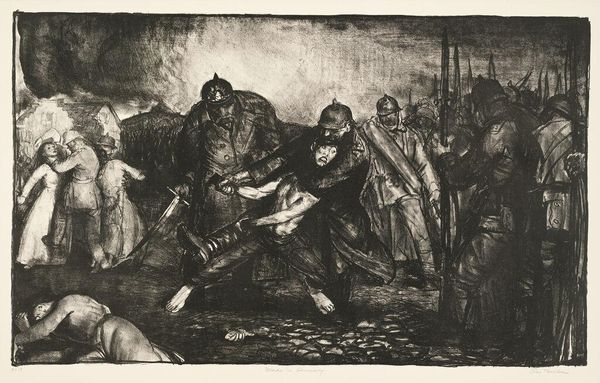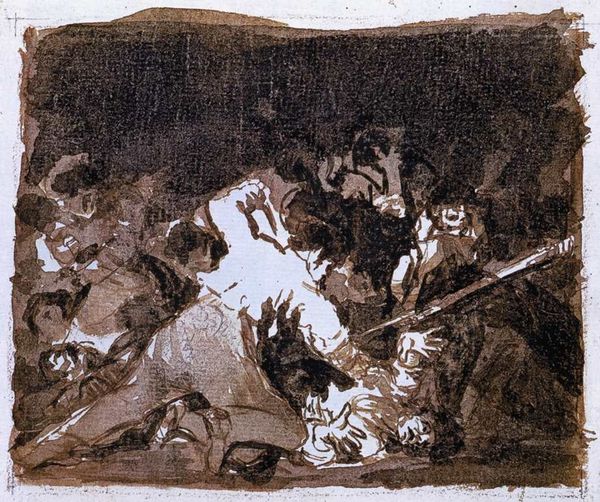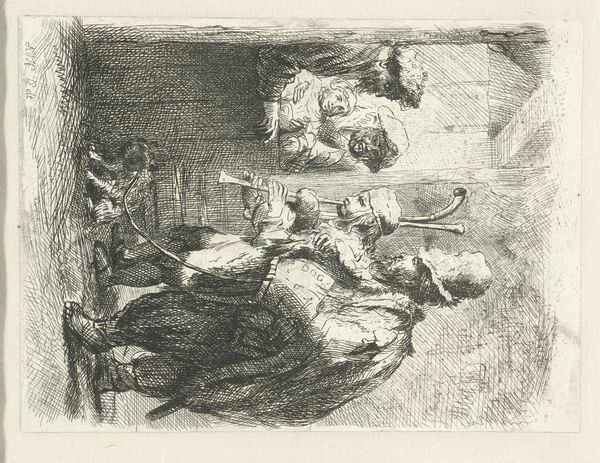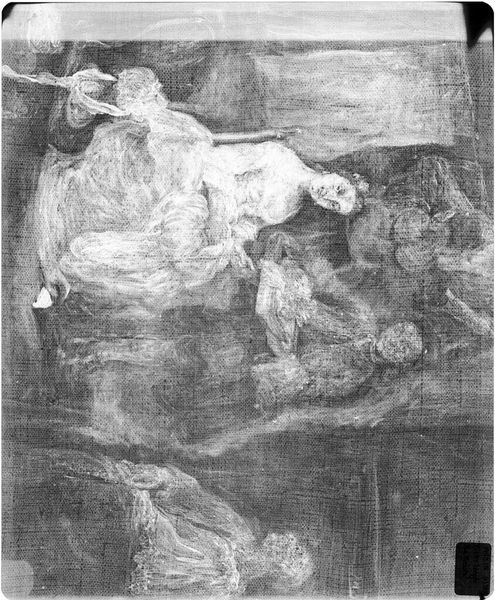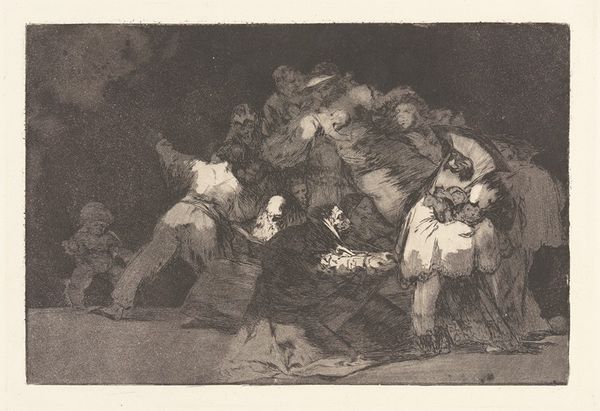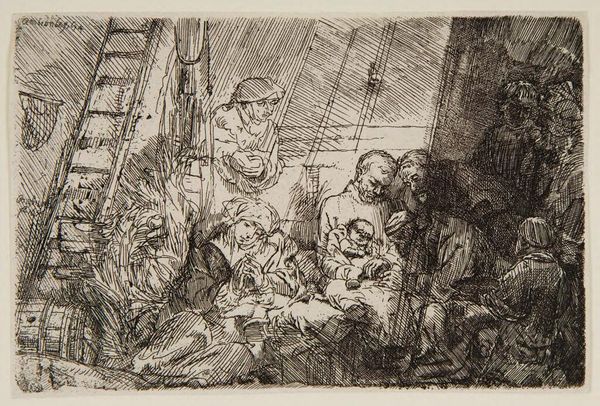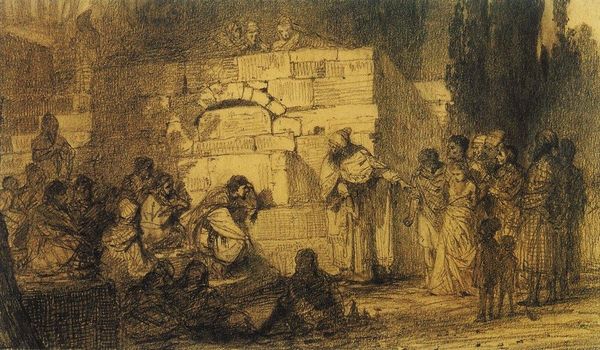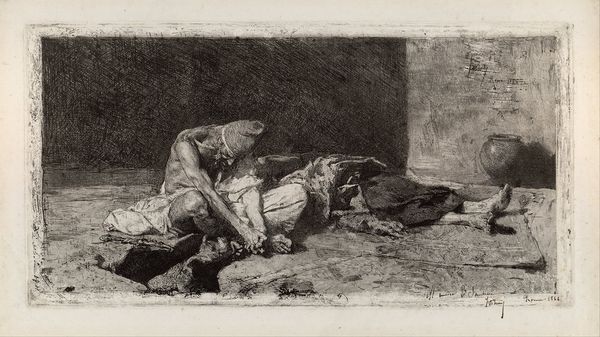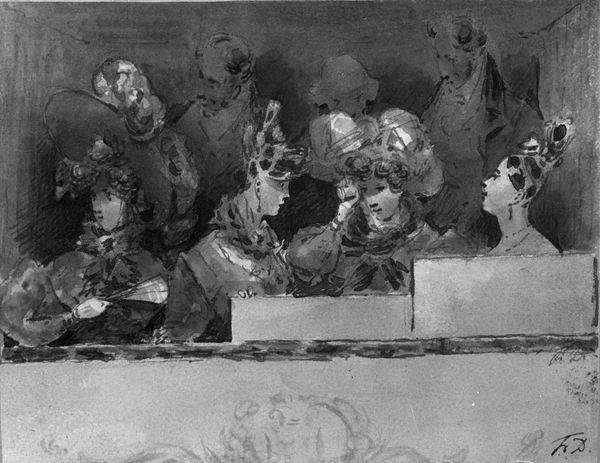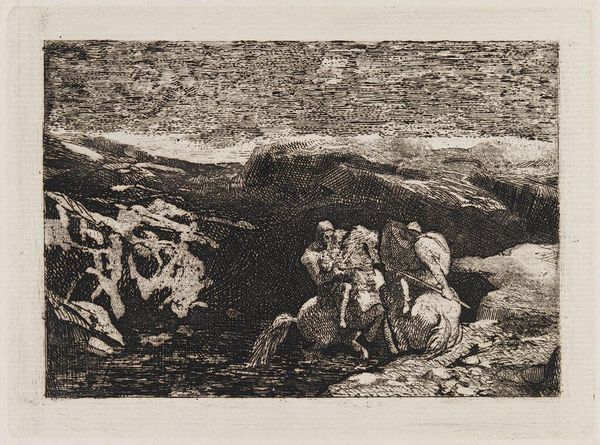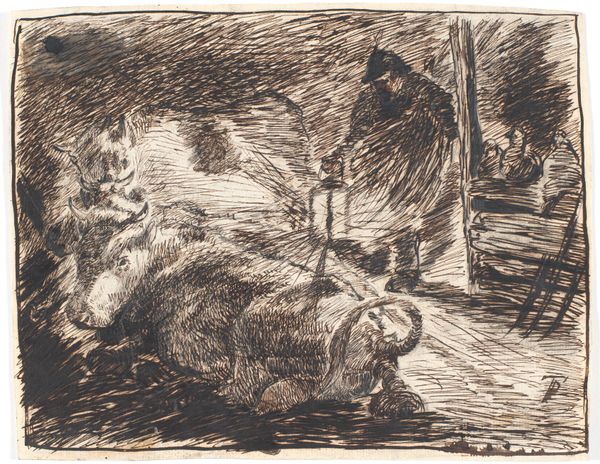
print, etching
#
allegories
#
allegory
#
narrative-art
# print
#
etching
#
pencil sketch
#
charcoal drawing
#
figuration
#
pencil drawing
#
romanticism
#
history-painting
Dimensions: 17.5 x 22 cm
Copyright: Public domain
Curator: Goya's print "Truth Has Died," created around 1814, is a powerful statement on the sociopolitical landscape of post-Napoleonic Spain. Made using etching techniques, the allegorical scene is rich with historical context. Editor: Wow. I get this oppressive feeling looking at it. All that scratchy darkness pressing in... it feels like a nightmare clinging to a fading memory. Is she dead-dead, or just knocked out? Curator: Allegorically dead, I would argue. "Truth," depicted as a prone, vulnerable female figure, has been overcome. This reflects Goya's disillusionment with the restoration of the monarchy under Ferdinand VII, where liberal reforms were suppressed and traditional powers reinstated. Editor: Right. All those ghoulish figures looming over her, the one in the pointy hat especially – they feel like they're celebrating! Is that what authority does, then? Dance on the grave of truth? He’s not holding back here, is he? Curator: Certainly not. The figures represent a range of societal institutions that Goya perceived as complicit in the death of truth – clergy, academics, figures of power, all cloaked in shadow. Editor: You know, there's something almost…tender in the way the "Truth" figure is drawn. Vulnerable is spot on, and yet there's a serenity, almost like she’s relieved it's all over. Curator: That tension between vulnerability and resignation is a hallmark of Goya’s later works. The romantic elements really come through, the drama heightened through the contrast between light and dark. It's a very evocative piece of political commentary, wouldn’t you agree? Editor: Totally. And you see the timelessness, don’t you? Substitute those hooded figures for today’s manipulators and power brokers, and sadly, it's just as relevant. Curator: Exactly. Its commentary remains resonant because the forces Goya critiques are perpetually present in society. The print makes us confront our relationship to power and ideology. Editor: Thinking about its title, "Truth Has Died"... it’s a gutsy statement, but I admire that kind of stark pronouncement. Very metal! Curator: Indeed. An unequivocal challenge to the established order. Editor: A heavy work to contemplate, definitely, but I appreciate Goya not letting anyone off the hook with "Truth Has Died".
Comments
No comments
Be the first to comment and join the conversation on the ultimate creative platform.


